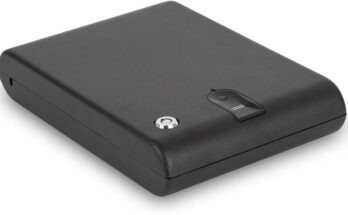Activated charcoal is a type of charcoal that’s processed to make it more porous. This porous texture is what distinguishes it from other types of charcoals, including the type used for barbecuing. Acfivated charcoal is negatively charged, porous texture helps trap toxins, preventing your body from absorbing them.
Activated Charcoal used in the Treatment of Intoxications:
Activated charcoal has been shown to be an effecting complexing agent for many drugs. Activated charcoal has an ability to absorb a wide variety of substances. This property can be applied to prevent the gastrointestinal absorption of various drugs and toxins and to increase their eliminations, even after systematic absorption.
Activated charcoal is more effective than gastric emptying. However, if the amount of drug or poison ingested is very large if its affinity to charcoal is poor, the absorption capacity of activated charcoal can be saturated. In such cases properly performed gastric emptying is likely to be more effective than charcoal alone.
Although it is not uniformly efficacious for all drugs, activated charcoal appears to be a generally useful adjunct for gastrointestinal decontamination.
Activated Charcoal used as Water Filtration:
Water treatment technologies in the developing world typically focus on removing two types of impurities from water sources, suspended solids and microbial pathogens. However, as industrialization and high-input agriculture has expanded into the developing world, chemical impurities such as pesticides, herbicides and fertilizers have found their way into drinking water supplies and have been linked to severe health-related issues.
Activated charcoal has the capacity to remove these problematic chemicals from water sources. Activated charcoal is a popular way to reduce heavy metals and flouride content in water. However, it does not appear to be very effective at removing viruses bacteria or hard water minerals.
Activated Charcoal used for Teeth Whitening:
Activated charcoal has a high porosity, suitable for absorption in emergency medical situations regarding certain poisons. Its absorbing ability may produce ion-exchange via mouth with its nano sized pores that may bind and remove tooth staining agents. Activated charcoal dentifrices and powders are classified as fashionable oral hygiene products of the modern age.
They are primarily used for tooth brushing and extrinsic stains removal and, it is entitled as “tooth whitening”. Whitening tooth paste often increases the risk of wearing the dental structure and may cause dissapointments of patients if the cosmetics outcomes are not achieved. Activated charcoal surely helps you to whiten your teeth without any dismay.
Activated Charcoal used as Skin Treatment:
Activated charcoal is also very useful for the skin. Apply this to the skin is touted as an effective treatment for acne. It provides cleanness, tensor and moisturizing effects, removing dead cells, residue and the other materials deposited on the stratum corneous. It is beneficial to remove blackheads and dead skin. It also helps to tone the skin and treat the wrinkles.
Activated charcoal show a very efficient effect on the skin. The kost important characteristic of an activated charcoal is its absorption capacity. It removes wide variety of organic based contaminants, as well as some inorganic contaminants. Dirt, toxins, chemicals and other poisons are attracted to the charcoal and washed away.
Activated Charcoal used for Trimethylaminuria Patients:
Trimethylaminuria is a disorder in which the volatile, fish smelling compound, trimethylamine (TMA) accumulates and is excreted in the urine, but also found in sweat and breath of these patients. Because many patients have associated body odours or halitosis, trimethylamunuria suffers can meet serious difficulties in social context, leading to other problems such as isolation and depression.
The accumulation of odorous trimethylamine can be reduced by absorption with activated charcoal after systematic multiple dosing regiment. Additionally activated charcoal also find its use in the alleviation of gas and bloating after consumption of gas producing meals.



